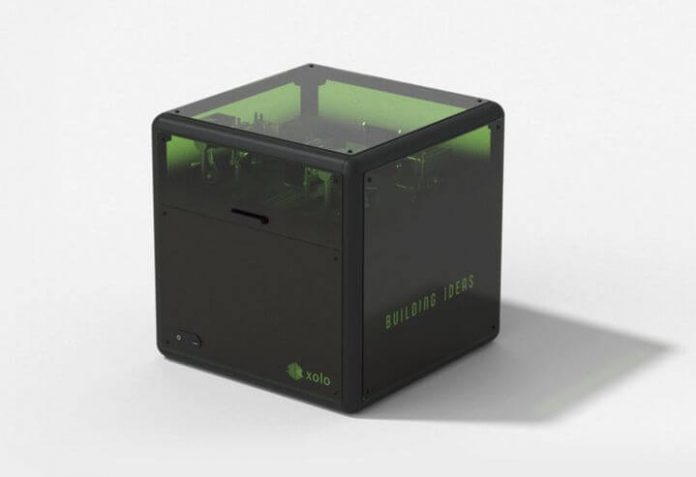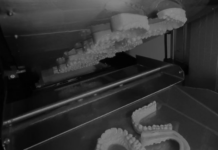Simultaneous with the release of a revealing research paper on Xolography, xolo has released details on their first volumetric 3D printer.
To date, 3D printing has used the layer-by-layer principle in almost all 3D printing processes. This is the case for SLS, SLA, FFF and other processes. But it’s not what’s used in volumetric 3D printing.
Volumetric 3D Printing
Volumetric 3D printing is an entirely new concept in which the entire print is produced almost simultaneously. Instead of building the object layer-by-layer, light projections (each an image) are repeatedly applied to a spinning vat of transparent resin. It’s a process similar to computed axial lithography, but it operates in reverse.
Instead of obtaining interior scans from different angles and reconstructing a 3D model, here a 3D model is decomposed into images from different angles that are projected into the resin. Due to sufficient energy striking specific voxels via the light patterns, a 3D object can be completely built.
The advantage to volumetric 3D printing is speed. Instead of building voxel-by-voxel, or even layer-by-layer, the 3D printer builds the object using all layers at once, so to speak.
xube Volumetric 3D Printer
Xolo has also released what is very likely the first purchasable volumetric 3D printer, the xube.
The device is not intended for commercial use, but is to be used by researchers and academia. This type of launch has previously been done by other 3D print startups, most notably Aurora Labs. It’s a way to perfect the as-yet unknown issues in the machine and process. That’s perfectly understandable as xolography is so new, so different, that it deserves special attention by folks who can understand what’s happening in the xolography process.
The xube is, as you might expect, a small device. Its build volume is “only” 50 x 70 x 90 mm, about the size of typical resin 3D printers used for jewelry applications, and certainly not yet appropriate for additive manufacturing. The machine’s dimensions are only 50 x 50 x 50 cm, easy to fit anywhere. xube includes dual 405nm lasers and UHD DLP for projection of each image, and has an optical resolution of 0.03mm on the X-Y axes, and 0.05mm on the Z axis. But there’s one specification that stands out from all others – print speed.

















































